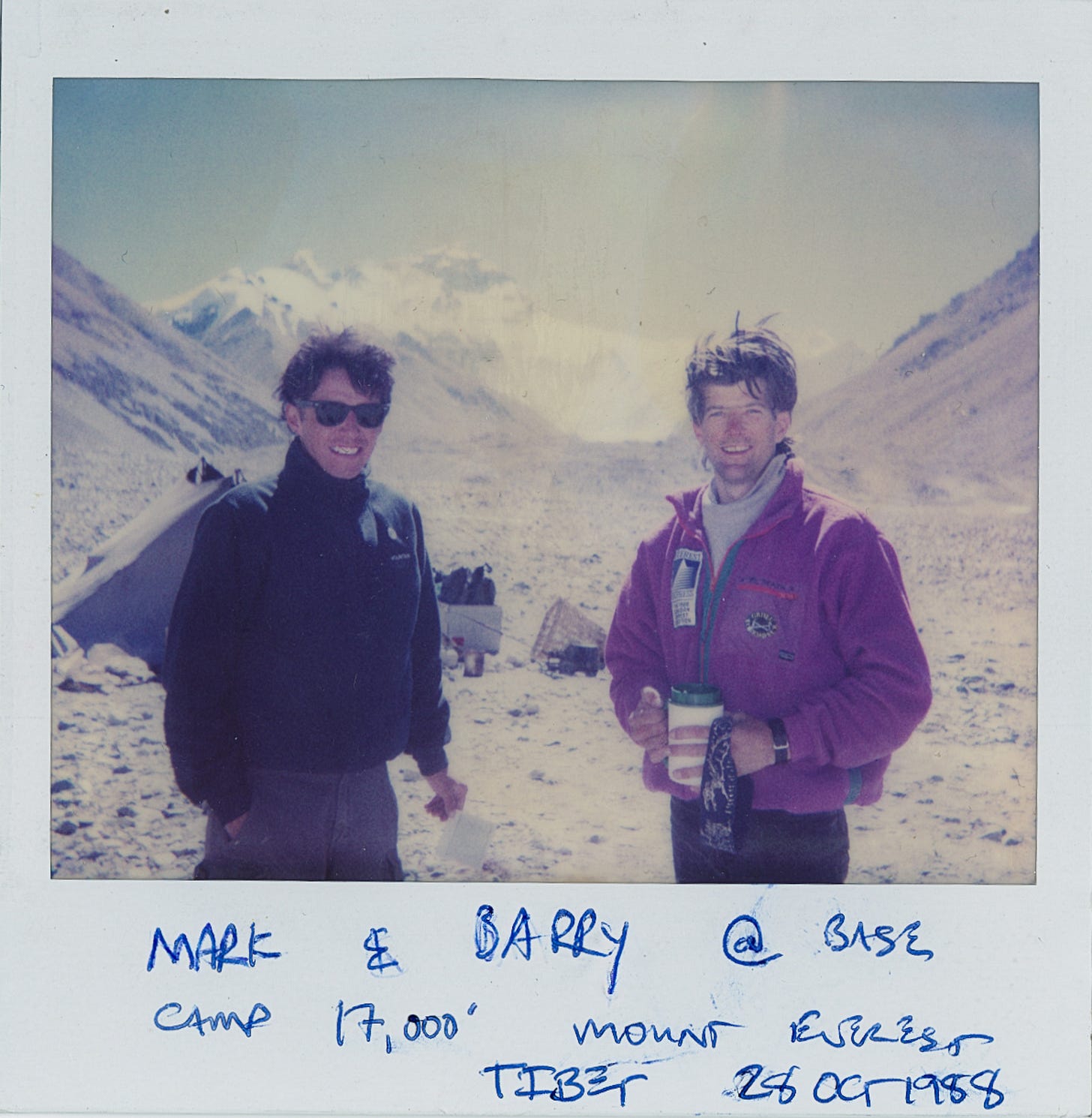There will be furor, both excitement and indignation, for and against.
Four British climbers summited Everest five days after leaving the UK, having prepared for the climb by sleeping in hypoxic tents at home and breathing Xenon gas, which artificially stimulates the body to increase production of erythropoietin (EPO), the hormone responsible for producing red blood cells. Red blood cells (RBCs) transport oxygen from lungs to tissue where it is used to produce energy, then the RBCs move one byproduct of energy production, carbon dioxide, back to the lungs to exhale. The greater the level of RBCs the higher the muscle oxygenation and performance, and when combined with supplemental O2 (and possibly other physiological interventions like dexamethasone, use of which has been normalized, “50% [of clients] are using it above C3”) this turbo charges one's ability to adapt, survive and thrive at the highest altitudes.
In the sport of mountain climbing there are no rules so people can and should do whatever they please (as long as they respect and maintain the natural environment they move within).
And yet ... human nature is fickle.
Back in 1989 several friends, Eric Escoffier, Stephane Schaffter, and Michel Fauquet (I didn't know Christine or Frederic at the time) used an 'artificial' acclimatization protocol to attempt a rapid roundtrip to the highest point in the world, an expedition dubbed "Everest Turbo". The team first acclimated normally, spending several nights at the Vallot hut and the summit of Mont Blanc (4807m), where they also underwent significant medical testing. They later spent hours and days in a hypobaric chamber, exercising and sleeping at the altitude equivalent of 7000m. Once acclimated they flew to the north side of Everest, took advantage of a larger French team's infrastructure and reached 7800m five days after leaving Paris. Bad weather shut them down, however, and they were unable to climb any higher. Nature still gets a vote.
At the time, Pierre d'Alboy and I joked about the lab rats acclimatizing in a pressure chamber and how, to do so on a natural timeline, outside and up high in the mountains, would be more satisfying but we also appreciated the drug-free ethic and that they would reject supplemental oxygen while on the climb. The artificial, hypoxic and hypobaric stimulus triggered natural physiological adaptation, and while the same may be said of xenon use, the original "Everest Turbo" project felt less icky, less of a transgression against nature and, dare I say, ethics (my own).
Again, there are no rules so people can and should do whatever they please.
And yet ... I feel strongly.
I have put together a series of interlinked essays on the topic of PEDs, sport for health and hypocrisy but haven't yet figured how to present them all in a logical, reader-friendly way. I will though, and soon.
It is wild to see these dramatic changes in both technology and the relationship with the natural environment in my lifetime. Viewed over time, the trend had been towards less application of technology, a rejection of the siege style expeditions that were (perhaps) appropriate for the psychological conditions of the era, the technology, and the relationship post-industrial-revolution human beings had with the natural environment. As a result of the trend, and my own participation in the movement opposing the crushing application of technology and personnel, I had hoped that a "less is more" ideal would be accepted and chased by more than a dedicated few. The movement is small because the standards are difficult to attain and sustain; small, autonomous teams, undertaking low-impact (environmentally speaking) climbs on the most difficult terrain in good style (ethically speaking), shouldering greater personal responsibility for their own technical competence, risk-management, and choice of objectives.
Instead, the larger, more visible movement — commercial expeditions on the highest peaks where comfort and safety are promised (purchased) and only the minimum of technical ability and fitness are required — may only be described as "more is MORE". The momentum in this direction is insane to me, and also unstoppable. All I can do is observe, and notice when my mouth is hanging open in shock and awe.
OG Turbo (article in French but a web translator does just fine)
The video of the OG Turbo attempt is entertaining, and you can auto-generate English subtitles using the Settings icon:
My curiosity led me to the video below because I wanted to understand exactly what is happening — what has been normalized — at Everest Base Camp and on the mountain itself. My imagination was wholly inadequate. Still photos and written descriptions fell short, but the video by Radio Télévision Suisse about 'climbing' Everest with all of the comforts of a luxurious home is like a horror film to me.
Again, you can auto-generate English subtitles using the Settings icon.

There is a video of me speaking on this topic for paid subscribers … level up.






There's a good discussion on the paid subscriber side about this article and the video monologue I recorded on the topic.
Steve House released a podcast talking about how Everest is more like running a road marathon than a climbing challenge but there are lots of routes and mountains. Commercialization only really impacts climbers that need the easy way up to the summit. Would be super interesting to hear you and Steve House discuss this. Both of you had climbing careers based on the same values and ethics but the Everest circus is probably a big part of his business now. That would be an epic podcast!